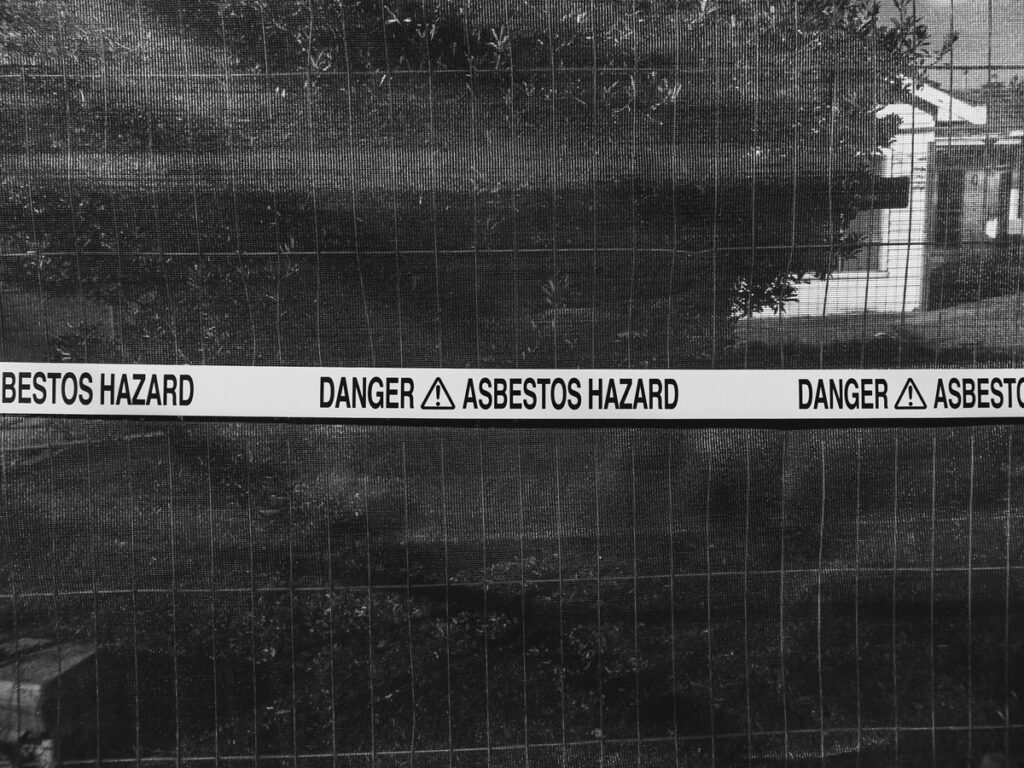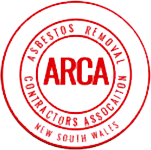
TL;DR
- Friable asbestos can be crumbled or reduced to powder by hand pressure when dry, meaning its fibres are easily released into the air and pose a high health risk.
- Non-friable asbestos (also known as bonded asbestos) has fibres tightly bound in a solid material like cement or vinyl, so it’s lower risk when intact.
- Both types can release asbestos fibres if damaged, deteriorated, or disturbed during renovations or demolition.
- Only licensed asbestos removalists should manage or remove asbestos-containing materials in Australia.
- Always engage professionals for asbestos testing, management, and safe removal in line with workplace and environmental regulations.
Asbestos remains a significant safety and compliance issue in Australia, especially during building maintenance and renovation of older structures. While asbestos has long been banned for new use, it still exists in countless Australian homes, schools, and workplaces built before the 1990s.
One of the most common questions is: What’s the difference between friable vs non-friable asbestos? Understanding these two types – their definitions, risks, and handling requirements – is vital for anyone managing or working around asbestos materials.
In this article, we’ll explain the friable asbestos meaning and the non-friable asbestos meaning, outline how they differ, explore their health implications, and clarify what Australian regulations say about their safe management and removal.
What Is Asbestos?
Asbestos is a naturally occurring fibrous mineral that was once prized for its strength, heat resistance, and insulating properties. It was widely used in Australian construction and manufacturing – in insulation, cement sheeting, floor tiles, roofing, fireproof coatings, and even textured paints.
While asbestos use was completely banned in Australia at the end of 2003, many older buildings still contain asbestos materials. The danger lies in the asbestos fibres – when released into the air and inhaled, they can cause serious lung diseases.
This risk depends on whether the asbestos is friable or non-friable – in other words, how easily it can crumble or release fibres into the air.
Defining Friable Asbestos: What It Means & Why It’s Risky
The friable asbestos meaning refers to any asbestos-containing material that, when dry, can be crumbled, pulverised or reduced to powder by hand pressure. Because these materials are soft and loosely bound, they can easily release asbestos fibres into the air when disturbed.
Friable asbestos poses a high risk to human health. The loose fibres can be inhaled deeply into the lungs, where they may cause asbestosis, lung cancer, or mesothelioma – often years after exposure.
Examples of friable asbestos-containing materials include:
- Pipe insulation and lagging
- Sprayed asbestos coatings or fireproofing sprays
- Loose-fill asbestos insulation (such as “Mr Fluffy” insulation)
- Thermal insulation wraps and felts
Due to the elevated risk, friable asbestos is classified as Regulated Asbestos-Containing Material (RACM). In Australia, only a licensed asbestos removalist can safely remove or manage friable asbestos.
Defining Non-Friable Asbestos: Meaning, Characteristics & Examples
The non-friable asbestos, also known as bonded asbestos, describes materials where asbestos fibres are tightly bound within a solid matrix such as cement, resin, or vinyl. These materials cannot be crumbled or reduced to powder by hand pressure when dry.
Non-friable asbestos is generally considered lower risk because the fibres are not easily released unless the material is disturbed, damaged, or weathered. However, if non-friable materials are drilled, sanded, cut, or broken, they can release asbestos fibres into the air and become friable.
Common examples of non-friable asbestos-containing materials include:
- Asbestos cement sheeting (“fibro”) used for roofing, walls, and eaves
- Corrugated asbestos cement roofing
- Vinyl asbestos floor tiles and backing materials
- Asbestos cement pipes, gutters, and moulded products
In Australia, non-friable asbestos is far more common in domestic buildings than friable forms – particularly in homes built before the late 1980s.
Key Differences: Friable vs Non-Friable Asbestos
While both types contain asbestos fibres, the key distinction lies in how securely those fibres are bound.
- Friable asbestos can be easily crushed or powdered – releasing fibres into the air with minimal disturbance.
- Non-friable asbestos remains tightly bound within a solid material and poses a lower risk if left intact.
However, non-friable materials can become friable over time through age, water damage, or mechanical disturbance such as drilling or demolition. In such cases, the asbestos must be handled under friable removal regulations – requiring full containment and licensed professionals.
Health & Safety Risks
Asbestos fibres are microscopic and airborne – meaning they can be inhaled without notice. Once inside the lungs, they can cause serious health conditions, including:
- Asbestosis – scarring of lung tissue
- Lung cancer
- Mesothelioma – a rare but aggressive cancer of the lung or abdominal lining
Friable asbestos presents the highest danger because the fibres are easily released and dispersed. But even non-friable asbestos can become hazardous if damaged or disturbed.
Never assume that “bonded” or non-friable asbestos materials are safe to handle. Proper safety precautions – wetting surfaces, containment, PPE, and professional removal – are essential to prevent asbestos exposure and protect human health.
Legal & Regulatory Considerations in Australia
In Australia, asbestos management and removal are strictly regulated under federal and state workplace safety laws.
- Friable asbestos removal must always be performed by a licensed asbestos removalist – following full containment and air monitoring requirements.
- For non-friable asbestos, it may be permissible to leave materials in place if they’re in good condition and undisturbed – but any work that risks disturbance triggers regulatory controls.
Regulatory oversight is handled by SafeWork, WorkSafe, and EPA authorities in each state and territory. Property owners, contractors, and persons conducting a business or undertaking (PCBU) are legally responsible for ensuring compliance.
Asbestos surveys, testing, and risk assessments are essential to identify asbestos-containing materials and plan safe removal or management strategies.
Identifying & Testing Friable vs Non-Friable Asbestos
Because asbestos can’t be reliably identified by sight, professional asbestos testing is crucial. Visual inspection alone can be misleading – especially when materials are painted or sealed.
Accredited laboratories use testing methods such as Polarised Light Microscopy (PLM) to confirm asbestos content and classify the material as friable or non-friable.
Sampling should only be carried out by trained assessors using controlled procedures to avoid disturbing the material. Once testing is complete, a qualified consultant can identify friable or non-friable asbestos materials and recommend appropriate management options.
Safe Handling, Removal & Management Best Practices
All asbestos removal work must comply with state and territory regulations to protect workers and the public.
For friable asbestos:
- Full enclosure and containment
- Negative air pressure and HEPA filtration
- Protective clothing and decontamination facilities for workers
For non-friable asbestos:
- Minimise disturbance – avoid power tools
- Wet materials to suppress dust
- Use manual removal methods where possible
- Dispose of waste at approved asbestos facilities
If non-friable materials are stable, they can sometimes be encapsulated or enclosed instead of removed. Always seek guidance from a licensed asbestos removalist to safely remove or manage asbestos-containing materials.
What to Do If You Suspect Asbestos on Your Property
If you think a material may contain asbestos, don’t touch it.
Instead:
- Contact a qualified asbestos assessor for inspection and testing.
- If confirmed, determine whether it’s friable or non-friable asbestos material.
- Develop an asbestos management plan that may include removal, encapsulation, or periodic monitoring.
- Ensure all removal and disposal is done by licensed professionals in compliance with state regulations.
Proper identification and management prevent asbestos fibres from being released – protecting everyone on site.
Conclusion
Understanding friable vs non-friable asbestos helps property owners, builders, and safety professionals make informed decisions about managing asbestos safely.
Friable asbestos materials crumble easily and release fibres, while non-friable asbestos keeps its fibres tightly bound within cement or vinyl – until disturbed.
Never assume a material is safe based on appearance alone. Always use qualified professionals for testing and removal – and follow Australian safety and compliance frameworks.
“At the GBAR Group, our licensed asbestos removalists are qualified to assess, classify, and safely remove both friable and non-friable asbestos, ensuring every site meets the highest standards of compliance and safety.”
GBAR Group is your trusted partner for asbestos assessment, removal, and remediation – helping clients stay safe, compliant, and confident.





